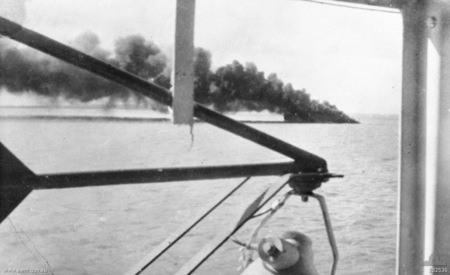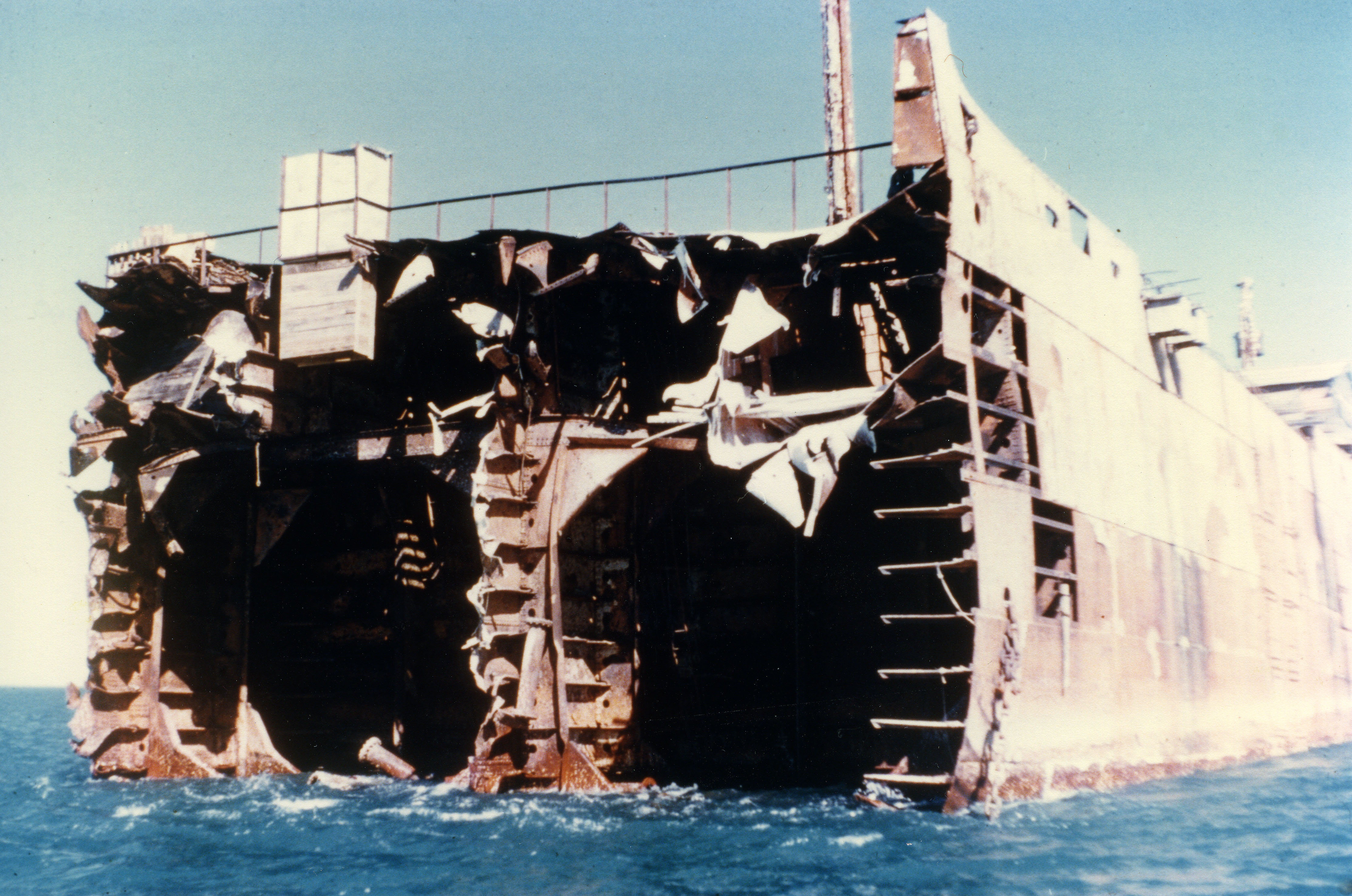Fujita Salvage Operation on:
[Wikipedia]
[Google]
[Amazon]
 The Fujita salvage operation was a two-year marine salvage operation of
The Fujita salvage operation was a two-year marine salvage operation of


 Darwin was bombed by the
Darwin was bombed by the
 By the late 1950s, seven large wrecks remained in Darwin Harbour, an impediment to shipping and port development. After numerous attempts to find a contractor, a Japanese company, the Fujita Salvage Company successfully secured the tender and obtained the rights to the wartime wrecks, many from Darwin salvage expert
By the late 1950s, seven large wrecks remained in Darwin Harbour, an impediment to shipping and port development. After numerous attempts to find a contractor, a Japanese company, the Fujita Salvage Company successfully secured the tender and obtained the rights to the wartime wrecks, many from Darwin salvage expert
 Relationships between the Darwin community and Fujita Salvage Company crew grew over the two-year operation. The salvage operations on the harbour coincided with the building of a new church on the Smith Street site of the former US military headquarters, destroyed during the war. Fujita, in a spirit of generosity, commissioned his team to create 77 bronze crosses for the church from scrap salvaged from the Australian vessel ''Zealandia''. He spoke at the official opening of the church on 23 July 1960, a year after the arrival of the Japanese salvage team.
Fujita considered the salvage operation his life work. A propeller blade from the ''Meigs'' features on his gravestone. The blade was gifted and relocated to Darwin Memorial Uniting Church in 2017.
The Fujita family album is held at
Relationships between the Darwin community and Fujita Salvage Company crew grew over the two-year operation. The salvage operations on the harbour coincided with the building of a new church on the Smith Street site of the former US military headquarters, destroyed during the war. Fujita, in a spirit of generosity, commissioned his team to create 77 bronze crosses for the church from scrap salvaged from the Australian vessel ''Zealandia''. He spoke at the official opening of the church on 23 July 1960, a year after the arrival of the Japanese salvage team.
Fujita considered the salvage operation his life work. A propeller blade from the ''Meigs'' features on his gravestone. The blade was gifted and relocated to Darwin Memorial Uniting Church in 2017.
The Fujita family album is held at
The Fujita Salvage Operation, Northern Territory Library feature
Fujita collection at Northern Territory Library
{{coord, 12, 31, S, 130, 50, E, type:waterbody_dim:50000_region:AU, display=title Marine salvage operations Maritime history of Australia Australia–Japan relations
 The Fujita salvage operation was a two-year marine salvage operation of
The Fujita salvage operation was a two-year marine salvage operation of World War II
World War II or the Second World War, often abbreviated as WWII or WW2, was a world war that lasted from 1939 to 1945. It involved the vast majority of the world's countries—including all of the great powers—forming two opposing ...
shipwrecks in Darwin Harbour
Darwin Harbour is the body of water close to Darwin in the Northern Territory of Australia. It opens to the north at a line from Charles Point in the west to Lee Point in the east into the Beagle Gulf and connects via the Clarence Strait wi ...
in the Northern Territory of Australia
The Northern Territory (commonly abbreviated as NT; formally the Northern Territory of Australia) is an Australian territory in the central and central northern regions of Australia. The Northern Territory shares its borders with Western Aust ...
from 1959 to 1961.
Bombing of Darwin


 Darwin was bombed by the
Darwin was bombed by the Japanese Imperial Navy
The Imperial Japanese Navy (IJN; Kyūjitai: Shinjitai: ' 'Navy of the Greater Japanese Empire', or ''Nippon Kaigun'', 'Japanese Navy') was the navy of the Empire of Japan from 1868 to 1945, when it was dissolved following Japan's surrender ...
on 19 February 1942. Four Japanese aircraft carriers launched 188 aircraft during the morning led by Commander Mitsuo Fuchida
was a Japanese captain in the Imperial Japanese Navy Air Service and a bomber observer in the Imperial Japanese Navy before and during World War II. He is perhaps best known for leading the first wave of air attacks on Pearl Harbor on 7 Decembe ...
targeting ships in Darwin Harbour as well as the town's port facilities.
The Japanese raiders arrived over Darwin at 9:58 am. HMAS ''Gunbar'' was the first ship to be attacked, being strafed by several Zero fighters. At about this time, the town's air raid sirens were belatedly sounded. The Japanese bombers then conducted dive bombing and level bombing attacks on the ships in Darwin Harbour. These attacks lasted for 30 minutes and resulted in the sinking of three warships and six merchant vessels, damaging another ten ships. The ships sunk were the USS ''Peary'', HMAS ''Mavie'', , (which exploded while docked at Darwin's main wharf), , , . The oil tanker ''Karalee'' and the coal storage hulk '' Kelat'' sank later. At least 21 labourers working on the wharf were killed when it was bombed. On their way back to the carriers, some Japanese aircraft passed over the ''Florence D.'' and ''Don Isidro'', which enabled planning for an afternoon strike which sank both freighters.
Salvage operation
 By the late 1950s, seven large wrecks remained in Darwin Harbour, an impediment to shipping and port development. After numerous attempts to find a contractor, a Japanese company, the Fujita Salvage Company successfully secured the tender and obtained the rights to the wartime wrecks, many from Darwin salvage expert
By the late 1950s, seven large wrecks remained in Darwin Harbour, an impediment to shipping and port development. After numerous attempts to find a contractor, a Japanese company, the Fujita Salvage Company successfully secured the tender and obtained the rights to the wartime wrecks, many from Darwin salvage expert Carl Atkinson
Carl Atkinson (-1985) was a renowned Australian diver and salvage expert from Darwin in the Northern Territory of Australia.
Diving
Atkinson lived at Doctor's Gully from 1945 to 1979, where he lived with his pet crocodile named Cuthbert, a s ...
. Ryogo Fujita and his crew of 120 workers arrived in Darwin on 21 July 1959.
The first ship they raised from the ocean floor was a transporter, the MV ''British Motorist''. The ship became the living quarters for Fujita's workers who were initially not permitted on Australian soil so soon after World War 2. They were not permitted to work in Darwin if they had any involvement in the Japanese war efforts.
They salvaged seven wrecks over two years including MV ''Neptuna'', USAT ''Meigs'' and the USS ''Peary''. Fujita also salvaged other metal materials from across the Darwin region the guns at East Point in Darwin.
A Japanese diver, Hayashi Sanzo died during the operation, when his air line became detached from his helmet.
Legacy
 Relationships between the Darwin community and Fujita Salvage Company crew grew over the two-year operation. The salvage operations on the harbour coincided with the building of a new church on the Smith Street site of the former US military headquarters, destroyed during the war. Fujita, in a spirit of generosity, commissioned his team to create 77 bronze crosses for the church from scrap salvaged from the Australian vessel ''Zealandia''. He spoke at the official opening of the church on 23 July 1960, a year after the arrival of the Japanese salvage team.
Fujita considered the salvage operation his life work. A propeller blade from the ''Meigs'' features on his gravestone. The blade was gifted and relocated to Darwin Memorial Uniting Church in 2017.
The Fujita family album is held at
Relationships between the Darwin community and Fujita Salvage Company crew grew over the two-year operation. The salvage operations on the harbour coincided with the building of a new church on the Smith Street site of the former US military headquarters, destroyed during the war. Fujita, in a spirit of generosity, commissioned his team to create 77 bronze crosses for the church from scrap salvaged from the Australian vessel ''Zealandia''. He spoke at the official opening of the church on 23 July 1960, a year after the arrival of the Japanese salvage team.
Fujita considered the salvage operation his life work. A propeller blade from the ''Meigs'' features on his gravestone. The blade was gifted and relocated to Darwin Memorial Uniting Church in 2017.
The Fujita family album is held at Northern Territory Library
Library & Archives NT comprises the Northern Territory Library and the two Northern Territory Archives Centres in Darwin and Alice Springs. Located in Parliament House in Darwin City, it is the premier public research and archival organisati ...
. It was exhibited in 2016.
See also
* Marine salvage *Bombing of Darwin
The Bombing of Darwin, also known as the Battle of Darwin, on 19 February 1942 was the largest single attack ever mounted by a foreign power on Australia. On that day, 242 Japanese aircraft, in two separate raids, attacked the town, ships in ...
References
External links
The Fujita Salvage Operation, Northern Territory Library feature
Fujita collection at Northern Territory Library
{{coord, 12, 31, S, 130, 50, E, type:waterbody_dim:50000_region:AU, display=title Marine salvage operations Maritime history of Australia Australia–Japan relations